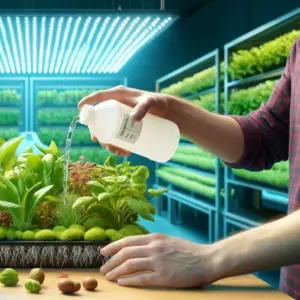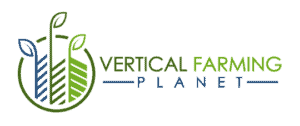Nitrogen is a critical nutrient for plant growth, playing a key role in the formation of amino acids, proteins, and chlorophyll. In hydroponic systems, where plants are grown without soil, ensuring an adequate supply of nitrogen is essential for healthy and robust plant development. This comprehensive guide will explore the importance of nitrogen in hydroponics, how to identify nitrogen deficiencies, various methods for adding nitrogen, and best practices for maintaining optimal nitrogen levels in your hydroponic system.

Understanding the Role of Nitrogen in Plants
Nitrogen is one of the primary macronutrients required by plants, along with phosphorus and potassium. It is a fundamental component of many plant structures and functions:
-
Chlorophyll Production: Nitrogen is a key element in chlorophyll, the molecule responsible for photosynthesis, which allows plants to convert light energy into chemical energy.
-
Amino Acids and Proteins: Nitrogen is essential for the synthesis of amino acids, which are the building blocks of proteins necessary for cell growth and development.
-
Nucleic Acids: Nitrogen is a component of nucleic acids, which are crucial for genetic material (DNA and RNA) and cell division.
-
Plant Growth: Adequate nitrogen levels promote vigorous vegetative growth, resulting in healthy leaves, stems, and overall plant structure.
Signs of Nitrogen Deficiency
Nitrogen deficiency can significantly impact plant health and growth. Common signs of nitrogen deficiency include:
-
Yellowing Leaves (Chlorosis): The most noticeable symptom is the yellowing of older leaves while new growth remains green.
-
Stunted Growth: Plants with insufficient nitrogen will exhibit slow or stunted growth.
-
Poor Fruit and Flower Development: Nitrogen-deficient plants may produce fewer flowers and fruits.
-
Thin, Weak Stems: Stems may become thin and weak, unable to support the plant adequately.
Methods for Adding Nitrogen to Hydroponics
There are several effective methods to add nitrogen to your hydroponic system. Choosing the right method depends on your specific system, the plants you are growing, and their nitrogen requirements.
1. Commercial Hydroponic Nutrient Solutions
Commercial hydroponic nutrient solutions are formulated to provide a balanced mix of essential nutrients, including nitrogen. These solutions are designed to dissolve easily in water and deliver nutrients directly to the plant roots.
Benefits:
-
Balanced Nutrients: Provides a comprehensive mix of nutrients tailored for hydroponic systems.
-
Ease of Use: Pre-mixed solutions are convenient and easy to use.
-
Consistent Results: Formulated to ensure consistent nutrient delivery and plant health.
How to Use:
-
Choose a Quality Nutrient Solution: Select a hydroponic nutrient solution suitable for the plants you are growing. Ensure it contains an adequate amount of nitrogen.
-
Follow Manufacturer Instructions: Mix the nutrient solution according to the manufacturer’s instructions, ensuring the correct concentration.
-
Monitor and Adjust: Regularly test the nutrient solution for nitrogen levels and adjust as needed to maintain optimal concentrations.
2. Nitrogen-Rich Additives
Nitrogen-rich additives can be used to supplement nitrogen levels in your hydroponic system. These additives are available in various forms, including liquid and powder.
Common Nitrogen-Rich Additives:
-
Calcium Nitrate: Provides both calcium and nitrogen.
-
Ammonium Nitrate: A potent source of nitrogen.
-
Urea: A highly concentrated nitrogen source that converts to ammonium in water.
How to Use:
-
Select the Right Additive: Choose a nitrogen-rich additive that is compatible with your hydroponic system and plants.
-
Measure and Mix: Carefully measure the required amount of additive and mix it thoroughly with the nutrient solution.
-
Monitor Levels: Regularly test the nutrient solution for nitrogen levels to ensure they remain within the optimal range.
3. Organic Nitrogen Sources
Organic nitrogen sources can also be used in hydroponics, especially for those who prefer natural and sustainable gardening practices.
Common Organic Nitrogen Sources:
-
Fish Emulsion: A liquid fertilizer made from fish waste, rich in nitrogen and other nutrients.
-
Blood Meal: A dry, powdery byproduct of the meat industry, high in nitrogen.
-
Compost Tea: A liquid extract of compost, providing a range of nutrients including nitrogen.
How to Use:
-
Prepare the Organic Source: Follow the preparation instructions for the organic nitrogen source. For example, dilute fish emulsion according to the label.
-
Add to Nutrient Solution: Mix the prepared organic source into the nutrient solution.
-
Monitor and Adjust: Regularly test nitrogen levels and adjust the amount of organic source as needed.
4. pH Control
Maintaining the correct pH level in your hydroponic system is crucial for nutrient uptake, including nitrogen. Most hydroponic plants prefer a pH range of 5.5 to 6.5. Outside this range, nitrogen and other nutrients may become unavailable to the plants.
How to Use:
-
Test pH Levels: Regularly test the pH of your nutrient solution using a pH meter or test strips.
-
Adjust pH: Use pH up or pH down solutions to adjust the pH to the optimal range for your plants.
-
Monitor Regularly: Continuously monitor pH levels to ensure they remain stable.
Best Practices for Maintaining Optimal Nitrogen Levels
Ensuring adequate nitrogen levels is essential for healthy plant growth in hydroponics. Here are some best practices to follow:
Regular Monitoring
-
Nutrient Testing: Regularly test the nutrient solution for nitrogen levels using a reliable testing kit. This helps you identify any deficiencies or imbalances early.
-
Visual Inspection: Monitor your plants for signs of nitrogen deficiency, such as yellowing leaves or stunted growth.
Balanced Nutrition
-
Comprehensive Nutrients: Use a balanced nutrient solution that provides all essential macro and micronutrients, not just nitrogen.
-
Adjust as Needed: Based on test results and plant observations, adjust nutrient concentrations to ensure a balanced supply of nutrients.
System Maintenance
-
Clean System: Regularly clean your hydroponic system to prevent the buildup of salts and residues that can affect nutrient availability.
-
Replace Nutrient Solution: Change the nutrient solution regularly, typically every 1-2 weeks, to prevent nutrient imbalances and maintain freshness.
Environmental Control
-
Temperature: Maintain a stable temperature in the grow area, ideally between 65-75°F (18-24°C) for most plants.
-
Light: Ensure plants receive adequate light for photosynthesis and growth. Use high-quality grow lights and maintain consistent light cycles.
-
Air Circulation: Provide good air circulation to prevent the buildup of humidity and promote healthy plant growth.
Recommended Products for Nitrogen Management in Hydroponics
Investing in high-quality products for nitrogen management can significantly enhance the performance of your hydroponic system. Here are some top recommendations:
-
NuAqua Systems
NuAqua Systems offers advanced reverse osmosis systems that ensure clean and balanced water for your hydroponic plants. Their systems are designed to remove contaminants and provide pure water, crucial for maintaining optimal plant health. Discover NuAqua Systems for reliable water filtration solutions. -
Lettuce Grow Farmstand
The Lettuce Grow Farmstand is an excellent self-watering and self-fertilizing vertical garden system. It is perfect for both indoor and outdoor use and allows you to grow a variety of crops effortlessly. Using filtered water with the Farmstand can significantly improve plant health and yield. Shop the Farmstand to find the perfect size for your needs. -
Growace Complete Home Kit
This comprehensive grow kit from Growace includes everything you need for a successful indoor hydroponic setup. It features high-quality grow lights, a tent, a ventilation system, and all necessary accessories. Using filtered water with this system can enhance performance and plant growth. Check out the complete kit to start growing your plants indoors efficiently.
Conclusion
Nitrogen is an essential nutrient for plant growth and development in hydroponics. By understanding the role of nitrogen, identifying signs of deficiency, and using effective methods to add nitrogen, you can ensure your plants receive the nutrients they need to thrive. Regular monitoring, balanced nutrition, and proper system maintenance are key to maintaining optimal nitrogen levels.
For more tips, products, and community support, visit Vertical Farming Planet. Join us in our mission to promote sustainable living and innovative gardening techniques.
